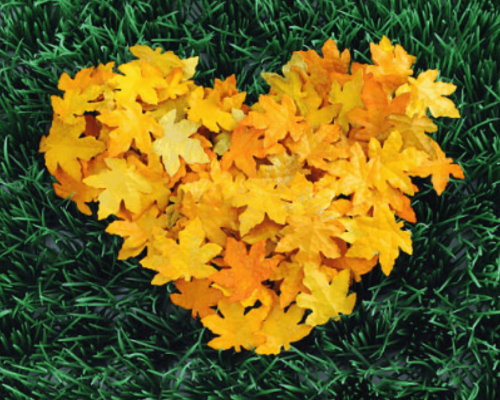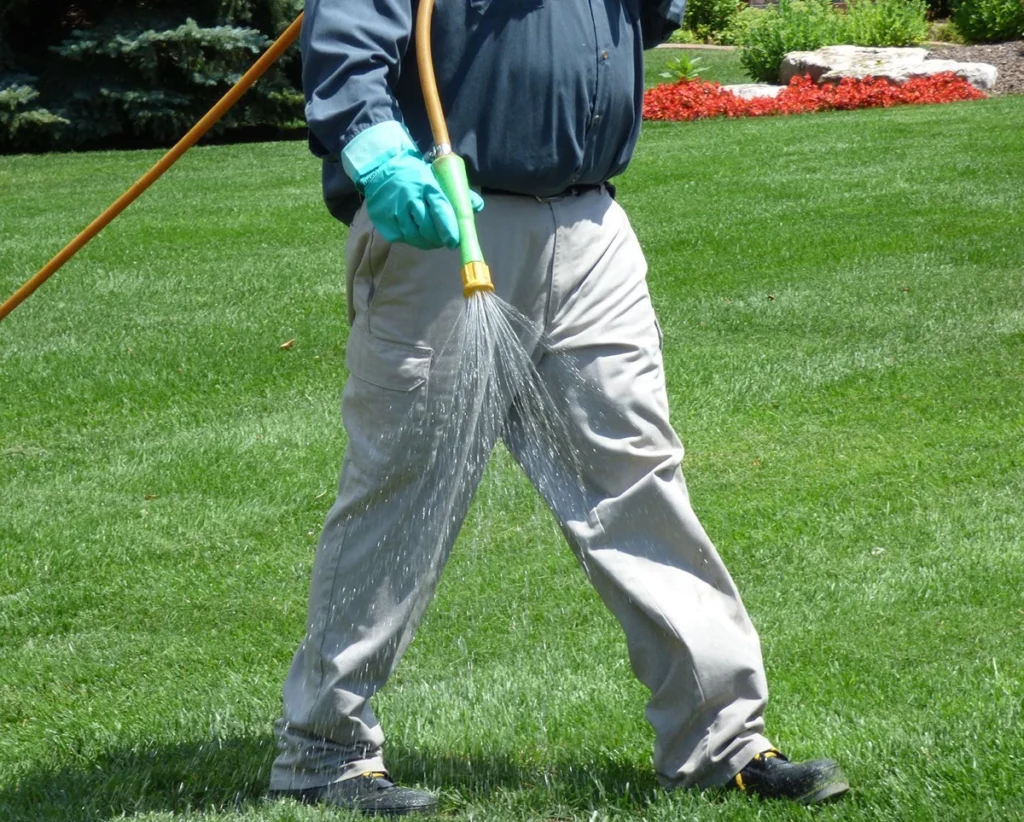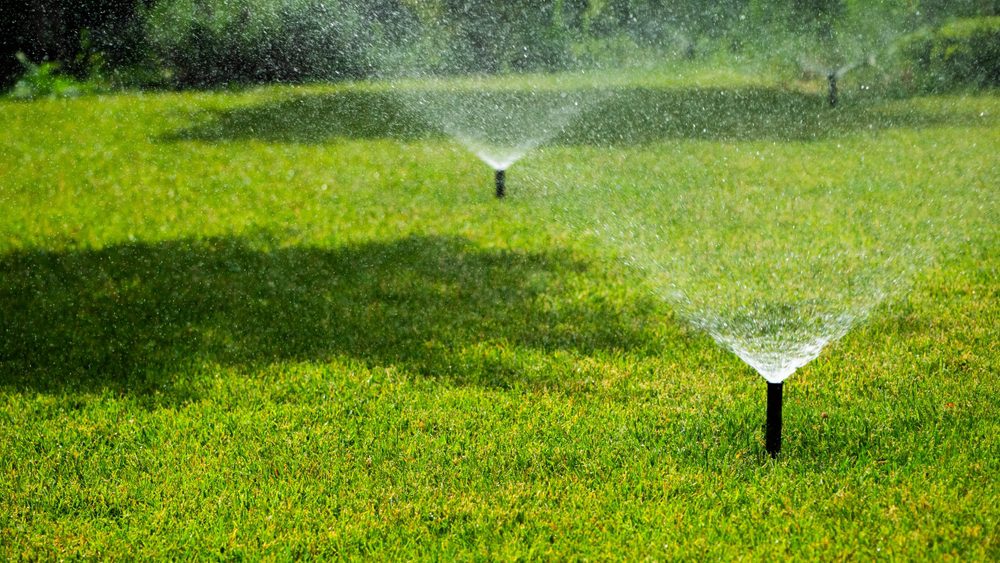The Ultimate Lawn Care Checklist for Fall
There’s something about fall that feels like a reset button for your yard. The summer heat starts to fade, the leaves turn brilliant shades of gold and red, and suddenly your lawn looks… a little tired. You can almost hear it sigh in relief.
Here’s the thing: fall isn’t the time to ignore your grass. It’s actually the most important season for lawn care. What you do between September and November sets the stage for how your lawn looks next spring—lush, thick, and healthy, or patchy and sad-looking.
So, let’s talk about what to do (and when) to give your lawn the best possible chance to thrive through winter and bounce back strong in the spring.

Keep Mowing
A lot of people pack away the mower the moment the weather cools, but that’s a mistake. Grass still grows until soil temperatures consistently drop below 50°F. Keep mowing, but slowly lower your mower blade as the season progresses.
Aim to end the season with grass around 2½ inches tall—short enough to prevent matting under snow, but not so short that roots become exposed.
And don’t forget the basics: keep your mower blades sharp. Dull blades tear grass instead of cutting it cleanly, leaving it vulnerable to disease just when it needs to store energy for winter.
Rake, Mulch, or Both
Fallen leaves might look picturesque, but left alone, they smother grass and block sunlight. Wet leaves, especially, create the perfect environment for mold and pests.
Now, you’ve got two good options here:
Rake and remove them completely if you’ve got a thick layer.
Mulch them with your mower if they’re not too heavy. Finely chopped leaves actually act like a natural fertilizer—adding organic matter back into the soil.
Mulch the manageable areas, then rake the thicker piles near trees or fences. It’s oddly satisfying, too—like giving your lawn room to breathe again.
Aerate the Soil
Here’s a lawn care secret the pros swear by: aeration. Over the summer, your soil gets compacted from foot traffic, rainfall, and even mowing. That means oxygen, water, and nutrients have a harder time reaching the roots.
Aeration solves that problem. It involves pulling small plugs of soil out of the ground (either manually or with a machine) to loosen everything up again.
If your lawn feels hard underfoot, or water tends to pool in spots after rain, aeration isn’t optional—it’s essential. You’ll be amazed at how much greener your grass looks next season.

Seed Bare or Thin Spots
Fall is prime time for overseeding—that’s just a fancy way of saying “adding new grass seed to your existing lawn.” The soil is still warm, the air is cool, and moisture sticks around longer. In other words, perfect growing conditions.
Walk around your yard and look for any thin or bare patches. Loosen the soil a bit, scatter your seed evenly, and gently rake it in. Then water lightly every day for about two weeks.
Pro tip: choose the right grass type for your region. In Michigan and much of the Midwest, for example, cool-season grasses like Kentucky bluegrass, fescue, and ryegrass do best. Down south, warm-season types like Bermuda or Zoysia might need a different approach—or even a late-summer seeding window instead of fall.

Feed Your Lawn Before Winter
If you only fertilize once a year, do it in the fall. Seriously. A slow-release nitrogen fertilizer helps grass store nutrients during dormancy and promotes stronger root development.
Think of it as sending your lawn into winter with a full pantry. Come spring, it’ll wake up ready to grow thick and green.
Just be mindful not to overdo it. Too much fertilizer can burn grass or cause excessive growth before frost, which actually weakens the plant. Follow the bag’s directions, and if you’re unsure, a local lawn care company can help test your soil to find exactly what nutrients it needs.
Don’t Forget to Water
You might think nature’s got it covered in the fall—but even with cooler weather, lawns still need consistent moisture. Newly seeded areas, especially, can dry out quickly if you skip watering.
Aim for about one inch of water per week, including rainfall. It’s not as demanding as summer watering, but it keeps roots healthy and hydrated before the ground freezes.
And here’s a small but important detail: disconnect and drain your hoses before the first hard frost. Frozen lines can crack or burst, and no one wants that surprise in November.

Control Weeds (They’re Sneaky This Time of Year)
Weeds don’t take vacations. In fact, fall is one of their busiest seasons. Dandelions, clover, and chickweed all like to germinate in cooler temperatures.
A fall weed control treatment—especially one containing pre-emergent herbicide—can stop them before they become a problem next spring. Just be cautious if you’re also seeding; weed control and new grass seed don’t mix well. Do one or the other, or time them about a month apart.
Edge, Trim, and Tidy Up
Before the snow flies, clean up those edges and garden borders. Trim back perennials, tidy up flower beds, and edge along sidewalks or driveways. It’s one of those steps that might feel purely aesthetic, but it makes a big difference. A clean edge not only looks sharp but also helps grass grow evenly next season.
Plus, there’s something rewarding about wrapping up the growing season with everything looking crisp and intentional.

Consider Professional Help (It’s Not Cheating)
Let’s be real—sometimes the to-do list gets long. Between kids’ activities, work, and unpredictable weather, fall lawn care can feel like one more thing on your plate. That’s where professional lawn care services come in handy. ExperiGreen can handle aeration, fertilization, and other lawn care needs in one visit. We’ve got the right tools and timing down to a science.
It’s not about taking the easy way out—it’s about protecting your investment. A well-cared-for lawn adds serious curb appeal and long-term property value.



